They affect your car’s handling, ride, braking and safety. But most people don’t give much thought to them.
Eighty-three percent of drivers aren’t “tire smart” (i.e., they don’t know how to properly check tire pressure), according to a 2015 survey from the Rubber Manufacturers Association (RMA).
You may be thinking, Tires haven’t changed since I bought my first set. Wrong! Since they carry you and your car around on the road, taking proper care of them is one of the most important safety factors that also happens to be the most overlooked. Here, we deflate the top five tire myths to make sure you know your way around on four wheels.
Myth #1: All Cars Come With Spare Tires
This used to be standard, but not anymore. For space-saving reasons and fuel efficiency, approximately one in three new cars don’t come with a spare tire in the trunk. Instead, you’ll get a “temporary mobility kit” with a tire sealant and a tire inflator or run-flat tires, says Maryland-based master mechanic and automotive radio show host, Pat Goss. If your tire is punctured, apply the sealant through the valve stem then use the inflator to re-inflate it, he explains. The downside? If the damage is more severe than a tiny hole (think nail size), the mobility kit probably isn’t going to cut it and you’ll have to be towed (GEICO’s mobile app makes it a cinch to request emergency roadside assistance.). Go check your trunk now, so you’re not surprised in an emergency.
Myth #2: The Correct Tire Pressure Is Listed On The Tire Sidewall
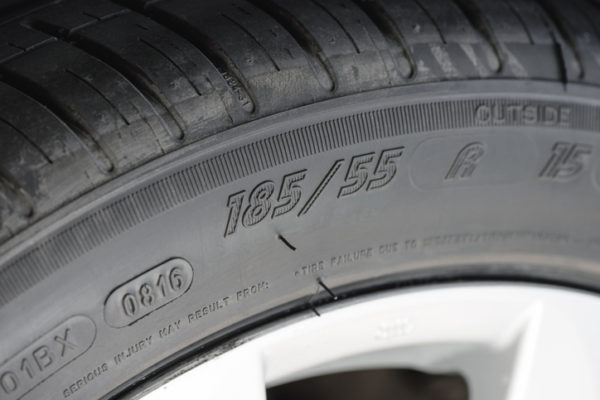 Half of all drivers believe this is where you should look to find out the ideal tire inflation pressure number. But these numbers actually tell you what size and kind of tire you have as well as the maximum cold inflation PSI the tire is rated for—not the recommended pressure for your vehicle. That information is actually listed on a label inside the vehicle’s driver-side door or in the owner’s manual.
Half of all drivers believe this is where you should look to find out the ideal tire inflation pressure number. But these numbers actually tell you what size and kind of tire you have as well as the maximum cold inflation PSI the tire is rated for—not the recommended pressure for your vehicle. That information is actually listed on a label inside the vehicle’s driver-side door or in the owner’s manual.
Myth #3: A Tire-Pressure Monitoring System (TPMS) Ensures That Your Tires Are Always Good To Go
A tire-pressure monitoring system electronically tracks and displays tire pressure via a gauge, pictogram display or a warning light on your vehicle’s dashboard. “These have lulled most drivers into believing that if the warning signal is off, everything is fine,” says Goss. Since a signal is only triggered when tires lose 25 percent of their inflation pressure (aka “dangerously low” tire pressure), you could be driving on tires that are underinflated enough to cause unnecessary wear, waste fuel and in some cases, decrease cornering ability while increasing stopping distances. Goss advises that you should check tire pressure every 30 days the old-fashioned way: manually, with a tire pressure gauge. (Need a refresher? Watch this quick how-to video on how to check your tire pressure.)
Myth #4: You Should Rotate Your Tires About Once A Year
 Not exactly. Tire rotation should be performed every 5,000 to 8,000 miles, which also coincides with the typical oil change recommendation. So the easiest way to ensure this happens is to get both done at the same time, says Goss. Another way to keep track? “Most cars today have dual trip meters, so you can set one trip meter to zero when the oil is changed or the tires are rotated and wait for it to reach the desired miles,” says Goss.
Not exactly. Tire rotation should be performed every 5,000 to 8,000 miles, which also coincides with the typical oil change recommendation. So the easiest way to ensure this happens is to get both done at the same time, says Goss. Another way to keep track? “Most cars today have dual trip meters, so you can set one trip meter to zero when the oil is changed or the tires are rotated and wait for it to reach the desired miles,” says Goss.
Myth #5: Never Continue Driving If You Experience A Flat
Run-flat tires—which let you keep driving after a puncture so you can make it to an auto shop—are becoming more popular. “Many manufacturers are using them because the additional cost of four run-flats is less than the cost of a spare tire, wheel and jack,” says Goss. Run-flats vary as to how far they can be driven and at what speed, but generally speaking they can be driven for up to 50 miles at a reduced speed (usually about 50 miles per hour), he explains. You can tell if your car has run-flats by looking inside the driver’s door, in your owner’s manual or checking the tire sidewall for one of the following codes: RFT, DSST, ROF, RFT, EMT, XRP, ZP or ZPS.
Have more tire questions? Here are 5 signs you need new tires.
Knowing your way around your tires is one thing, but being truly streetwise means having dependable insurance that won’t cost you an arm and a leg. Get a fast, free auto insurance quote from GEICO to see how much you could save.
By Nicole Cherie Jones

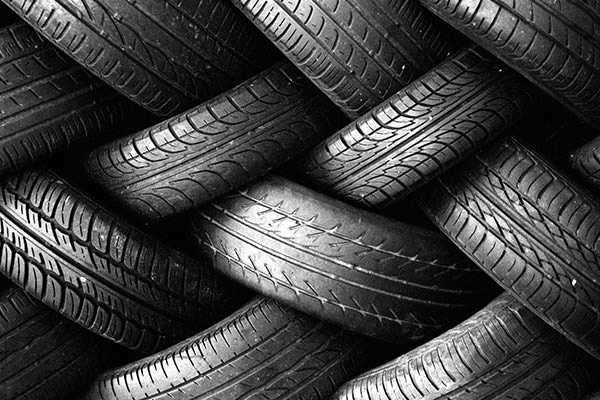



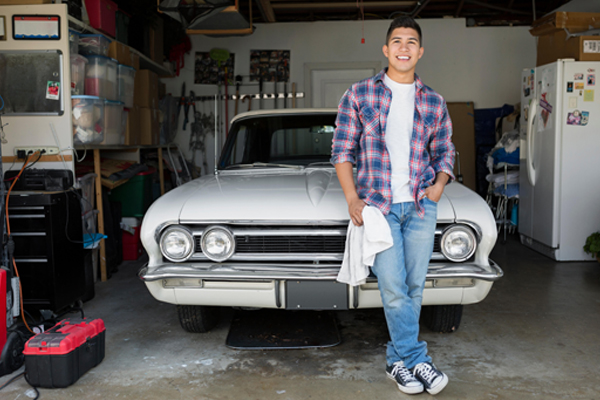
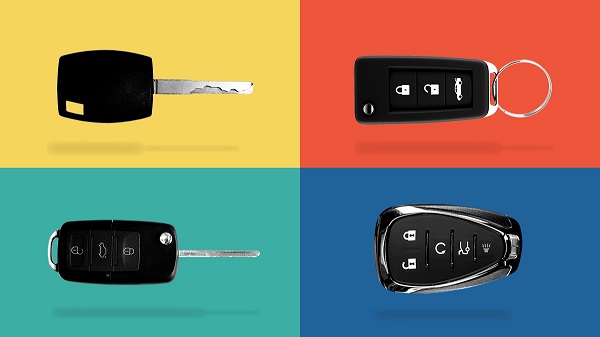
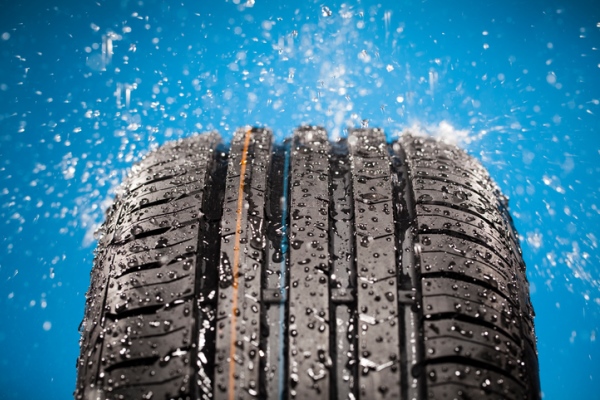

Mike Stewart says,
Myth 4…NOT TRUE! Many studies have been made on this rotation issue and on a typical set of 50k mile tires you will NOT experience any better mileage of less wear on tires if you rotate them every 12k and you actually save money! This is taking into consideration that regular maintenance is performed and alignment is as it should be.
charliehutch says,
Sorry Mike, I’m a mechanic for the last 35 years and most cars today are frt wheel drive. Frt. wheel drive cars wear out frt tires first and at 3 times the rate due to the differential and cornering. Just go out and look at your frt tires right now, and if not rotated in the last two oil changes the edges are worn farther than the rears. It is physics Mike ! Running them on the rear after 10k miles wears them flat again and keeps your tires ‘even’ all the way around !
Buying tires 2 at a time only gives the illusion you are saving money, but then half of your tires are twice as old……. Age is a factor in tire performance and if you notice those twice as old tires, if you drive normally, are cracking.
Maria says,
What are the advantages and disadvantages of nitrogen-inflated tires?
charliehutch says,
Maria the answer is NONE ! Yep its a scam that has nothing to do with physics ! Air stays in your tires because of the way they seal on the ‘rim’. Its the pressure that keeps it in. So if you keep your tire pressure at least at what the driver’s door post says it makes no difference if there is nitrogen or carbon dioxide… just put air in them its FREE at every gas station if you buy gas… which brings another point a gas station MUST provide you with compressed air for your tires if they don’t they are in violation of the law.
And yeah there is NO advantage to nitrogen except for the guy who charged you for it !!
Rob says,
I have to agree with others that #2 is false. Different tires, different tire pressure…period. My mom had a jeep cherokee with all season tires that replaced the manufacturers tires. The door sticker said 30psi so thats what she put. Wrong. They were visibly flat. The tire had 45psi on it so I filled it up to its required pressure…bingo! Door sticker is only for the tires the vehicle comes out the factory with. If you replace the tires check the tire for the correct pressure FOR THAT TIRE! The last 2 cars I’ve had I put rims and low profile tires on. If I didn’t follow what was on the tire I’d been on the side of the road. I was a professional mover for 12 yrs so I did some traveling. I’m a trucker now and the mechanic at Loves fills the tires up to whats on the tire. Hope this helps.
Jimmy Knuckles says,
A lot of misinformation being put out regarding #2. Fact: Correct tire pressure is listed on B pillar or driver door. Pressure listed on sidewall is max cold pressure. Replacing the OEM tire with larger size etc changes the suspension dynamics. You just became a test pilot! You now have to adjust the tire pressure to what is needed for proper wear, ride and control. 20″ tires on a car designed for 16″, for example, are much heavier. This impacts how well OEM shocks control compression and rebound. Increased unsprung weight hurts ride and cornering.
Oversized tires often wear out in the center of the tread due to low tire pressure. Tire offset to avoid suspension and body interference overloads the wheel and axle bearings.
Chaz Borges says,
Excellent !!
marsha walters says,
what about if you are told your tires are starting to dry rot?
what
kooky says,
I’d say you better get me off the road in a New York minute!!!!!!!!
Jeff says,
You should replace your tires immediately. And replace all 4 tires at the same time.
PR says,
#2 is completely false. Always go by the rating on the tire itself. The rating on the door was for the tires installed on the vehicle when it was new. For example, I had to replace 2 tires on my car. The fronts were max 35 psi, the backs were max 44 psi. I’ve always inflated to 15% below max, so about 30 on the front, 38 on the backs.
Dennis says,
#2 IS CORRECT! The tire sidewall indicates the maximum inflation pressure for the tire. The label in the driver door jamb takes factors such as vehicle type, weight, etc. into account for the same type of tire as the vehicle originally came with. If you install a better type of tire (high performance in place of a touring tire) them you will have to do more research as to what the correct pressure should be. Another concern to be aware of is to ensure that the correct type of tire is installed – a dealership installed a tire with a maximum pressure rating of 35psi on our minivan that had a specified pressure of 36psi, long-story-short, the tire was underrated for such a larger vehicle!
sam says,
Please don’t misguide people based on just what you think. Car manufacturers know better and if your statement is correct they would have advised on the door sticker as such.
hammer says,
You are incorrect in thinking that. Unless they install exactly the same tire when replacing. I have owned a automotive shop for over 25 years and if you change to a different tire the inflation pressure can be different. If your vehicle came with load c tires about 32-psi on label. And switch to load d or e. It could have max pressure of 80 psi. At 32psi you will be greatly under-inflated.
Scott says,
Nope. Label only. Do you realize by just adding 5 psi to a tire you are adding almost 6,000lbs of force to that tire. Manufacturers have lost lawsuits do to technicians just “topping” it off and not following the label mounted onto the b-pillar or d/s door of your vehicle
PR says,
All tires are not made the same. A P235/75R15 by one manufacturer may have a different pressure rating than from another. I have two pairs of tires, exact same size, different pressure ratings. Don’t go by the door.
charliehutch says,
absolutely NOT … sorry you cannot increase the weight of the car by adding air pressure to the tires… which is what you implied… sorry it sounds great but its not physics.. which is what I was in the business of for the last 35 years repairing cars and trucks. The tire pressure on the door post is ‘minimum’ pressures.. and also the number of passengers in the car helps determine the what of the tire pressure should be.
Some days there’s 4 people riding and some days 1. So lets do some math …
If you normally haul 4 average people around that’s 500 to 800 lbs.
If you only drive your self thats somewhere between 100 and 200 average..
The pressure recommended is for amount of total weight that tire is loaded with.
as an example… just you and the left frt has say;; 1750 lbs and the right rear has 1670…. so you set them in the middle for time and convenience …
the tire says 36 lbs max set the frt at 32 and the rear at 30… wear will tell you if your pressure is incorrect… the center of the tire wearing first indicates too high
the edges wearing more too low…
Michael Freedman says,
Run flat tires wear out in 10,000 to 15,000 miles I went through 4 sets in 40000 so I now have regular tires good for 70,000 miles and carry fix a flat and a small compressor., in my Sienna.
Dan Chacon says,
Ive known this 4 a long time since I owned a 76 service station. What makes me mad is that auto manufacturers r getting cheap and not giving us a full size spare anymore . they expect these cheap kits 2 work but they don’t since most people r too stupid 2 realize that u need 2 replace both tires not the one. Replacing one causes handling and wear issue on the others. Not too mention braking too.
David Drexler says,
Biggest scam being played on the Car Consumer: Not including a full size spare.
So they save $$ and you suffer.
If you want to know why? See what happens if you get a flat tire on Interstate 70 between Utah and Colorado and you don’t have a full spare.
A can of sealant, a donut spare, or run-flats that only go 50 miles will make you suffer if you get a flat. Try to replace a run-flat! See you in a week and hundreds of $$ later.
Everycar needs to have a full size spare in it regardless of weight, full economy, or space.
The spare needs to be outside the car on the back or bottom for easy access without having to take everything out of your car on the road.
Unfortunately, less and less cars are providing this.
Major disaster.
Alan says,
The tire inflation pressure shown on the car or truck can be very misleading. Example is the scandal with Ford and Firestone about who should tell you what pressure. In a car with very little load capacity the car’s label is ok. On an SUV, Truck or other large vehicle use the sidewall pressure to ensure no blowouts.
Cecilie says,
Thank you for your articles and emails. I appreciate Geico’s interested in helping us to be good safe drivers. Even though I’ve been driving for many years it never hurts to have refreshers at times.
Thanks again!
T R Dodson says,
good data…thanks.
george jones says,
Myth number 2- the correct tire pressure IS listed on the sidewall of the tire for THAT tire. you go by the sticker on the IF you havecto exact same make and style tire that came on the vehicle. Case in point- 2006 Toyota Tundra 4×4,tire BF Goodrich Rugged Trail, tire pressure front, 36,rear 28. Replacement tires I put on after wearing out originals, Pirelli Scorpion, E rated tire, MAX inflation 80 PSI. When I picked up my truck after having them installed it looked like i had 4 flat tires, they went by the door sticker. I ran 65 to 70 psi in those tires for 85000 miles.
Mike Boyer says,
You are incorrect, the MAXIMUM inflation for the tire is on the sidewall. You are correct about the tire pressures on the door being for the tires that came with the vehicle but 90% of the time they are the same for all makes of tires. Some manufacturers do have literature on the recommendation for air on certain vehicles but most do not. In your case the original tire was not a 10-ply and the replacements were. That is a rare case, most people are putting the same ply tire on that came off.
D. Mullins says,
Thank you Mike, you are 100% correct, and you said what I was going to say. In some rare cases, you may need to do some research into altering the tire pressure from what is listed on the vehicle if you upgrade or downgrade your tires….But other than that, 90% of the time you should just use the pressure indicated on your vehicle.
Joseph Green says,
Is it true that age alone can make a tire unsafe? If so, how do you determine that a tire with plenty of tread should be replaced regardless, solely because of its age? I have a vehicle I seldom drive with tires perhaps ten years old but still with good tread.
David says,
Tires have a life expectancy of 5 years then they break down & start cracking on the sidewalls. The month & year it was made is stamped on the sidewall inside an oval shaped circle.
Tanner says,
The date the tire was made is the last 4 digits of the DOT. For example a tire that has 4516 as the last 4 was made on the 45th week of 2016. If the tire has a 3 digit number like 458 that would be the 45th week of 1998 rare to see these now but it does happen.
Cecilie says,
I have been told that age long can cause a tire to be unsafe. In fact our 2001 Xterra has a spare that has never been used it’s full-sized and it is 15 years old now. I had them pulled the tire from the spare rack and check it there were no cracks no bumps no aging and therefore I chose to leave it as it was. As a spare I feel that it would be safe to get me somewhere, but eventually I’ll replace it just because it is now 16 years old!
I trust the tires made then by this company in particular are very good tires and would be an unnecessary expense at this time. I would be more concerned about the tires in my car is rolling on and be sure that they are checked for balance issues alignment and Sun cracking.
Another thing to consider is always checking recall lists as well as specific manufacturer recommendations.
Safe travels!
Rachel says,
Some tires have good tread but are no longer useful because they have weather wear or what they call dry rotted or cracked tires and can blow out during driving, if you are still unsure take them in to have them inspected!